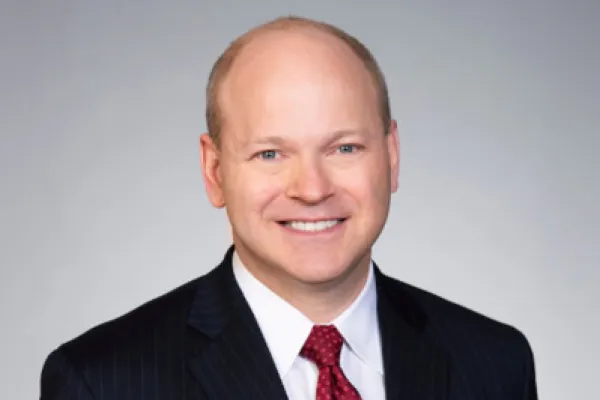On May 31, 2012 David Alward stood before the Legislative Assembly of the Province of New Brunswick, Canada. As Premier, he was about to preside over an event unprecedented in the history of the province. It was the last day before the legislature’s summer recess and Alward, as host of the occasion, had invited representatives from all six New Brunswick labor unions onto the floor, along with members of both the Liberal and New Democratic opposition parties and a special task force he had appointed after his 2010 election. After more than a year of research, planning and negotiation, the unified group of labor and elected officials had an announcement to make. The subject du jour: pensions.
The events of May 2012 have only just begun to be felt across the province and beyond its borders. Whereas many private companies and public jurisdictions have previously turned to employer-based, individual retirement savings plans as a solution to their employees’ future income needs, the citizens, politicians, union members and pension officials in New Brunswick sought and enacted a solution to providing real pension benefits that would be economically sound under 21st century conditions. Now throughout Canada, and beyond its borders, pension stakeholders are starting to take note.
As the financial crisis of 2008 exploded, New Brunswick — which shares its western border with the U.S. State of Maine and its eastern border with the Atlantic Ocean — watched many of the public and private pension funds within its borders take a big hit. It soon became apparent that the usual Band Aid–type fixes, like increasing contributions into a plan, were not going to work this time.
Honoring his campaign promise to find an industrial strength fix for pension underfunding, in late October 2010 Alward appointed a three-member task force to solve the problem. In a particularly politic move, the premier tapped well-respected labor attorney Susan Rowland and longtime actuary Paul McCrossan, a member of Alward’s Progressive Conservative party, to spearhead the effort. Economics professor and public policy research expert Pierre-Marcel Desjardins rounded out the team. After more than a year of studying pension systems around the globe, and identifying the Dutch system as their number one model, the New Brunswick Pension Task Force announced the details of a new pension scheme that would be “more secure, transparent, sustainable, reliable, affordable and predictable” than either a defined benefit or defined contribution plan. It was named the Shared Risk Pension.
“Shared risk would fix most pension problems in North America,” asserts Rowland, chief of the pension task force. With the shared risk model, New Brunswick became the first jurisdiction in North America to develop comprehensive funding and risk management procedures in the administration of pensions, that cover both asset and liability management while addressing the challenges faced by pension schemes today and into the future, underlines the report entitled, “Rebuilding New Brunswick: The Case for Pension Reform.”
The new pension model sports the best features of the Dutch pension system: pooled assets that are professionally managed; strict and predictable funding requirements; and risk management processes not previously a part of New Brunswick’s defined benefit plans. Like the Dutch plan — and the Wisconsin Retirement System in the U.S. — the shared risk plan is designed to self-correct according to the performance of its investment portfolio. That means that cost of living adjustments are eliminated in favor of a system of either “dividends” or reductions that change in concert with the annual portfolio asset size fluctuations.
Alward began his quest for a better pension model after several forest and paper products companies, the biggest industry in New Brunswick, took a severe hit during the dip in the housing market brought on by the 2002 downturn and 2008 financial crisis. Companies like Fraser Papers (in 2010) and St. Anne-Nackawic Pulp Co. (in 2004) saw their pension promises go up in smoke as they entered bankruptcy. When pensioners had their monthly checks slashed by 30 to 40 percent, Canadians learned that a pension promise could be broken. Soon public pension deficits came to light as Moody’s Investor Services and Standard and Poor’s Rating Services downgraded New Brunswick’s credit rating in 2009 and 2010, respectively.
One of the keys to making the new pension scheme a reality was the cooperation between political parties, public government and labor unions. “We adopted a collaborative approach to get it done,” explains task force member McCrossan. “When we designed the pension plan, the whole province took part in it,” adds the actuary who came back from his 2006 retirement twice: once to help the International Monetary Fund grapple with global pension issues ahead of the impending crisis and then again in 2010 when Alward appointed him to the pension task force. “The fear factor went away when we showed them the information,” agrees Michael O’Brien, a Fredericton city councillor and former finance committee chair, speaking about his own work with the unions and retirees.
The City of Fredericton, home of the provincial government, has six separate pension funds, five of which initially chose to move to the new structure. Along with the pension of New Brunswick’s City of Saint John, the governance structure of the old plan has been entirely redesigned. In the City of Fredericton, the old defined benefit plan, which had been managed by the municipal government along with its other financial portfolios, is now, by law, the fiduciary responsibility of an independent board of eight trustees. The board members are an even split between council-appointees and union members.
“Six union presidents came together in July 2010,” explains Wade Kierstead, president of CUPE 3864, known formally as the Canadian Union of Public Employees’ Technical and Professional Union for the City of Fredericton. That was when the city’s pension fund first raised serious flags. The $200 million City of Fredericton pension fund was found to be $59 million underfunded. It is one of the smaller plans; the largest, the New Brunswick government employee fund, stands at $5 billion in assets. Kierstead and his fellow union leaders got their members behind the change. There are sacrifices on both sides, employee and employer. For example, both will increase their contributions and a higher retirement age will be phased in over a 40-year period. Like Dutch pensions, the plans must be overfunded, in this case at 115 percent, to meet new legal requirements. “Everybody takes a little cut,” explains Jane Blakely, director of strategic direction and consulting for the City of Fredericton.
To incorporate all the changes, the Canadian Pension Benefits Act had to be amended. So it was that on May 31, 2012, when the amendment was officially accepted, creating a Part 2 of the Act that made way for the new pension regime, that the entire legislature gave Alward, the union leaders, and the pension task force a well-deserved standing ovation for bringing about a change that protects the future retirement of the 47,000 public employees of the Province of New Brunswick.
Looking forward, there are now plans in the pipeline, following the change over to the new scheme for most New Brunswick pensions, to amalgamate most of the plans into one, $10 billion pension plan. Outside New Brunswick, Newfoundland and Labrador Premier Kathy Dunderdale and Prince Edward Island Premier Robert Ghiz, are both studying the New Brunswick pension model.
For Canada, the development and adoption of a pension plan for the 21st century proves that it is possible for a disparate group of pension stakeholders — legislators, labor unions, employees, pensioners, and citizens — to work together to ensure a secure retirement for public servants.






